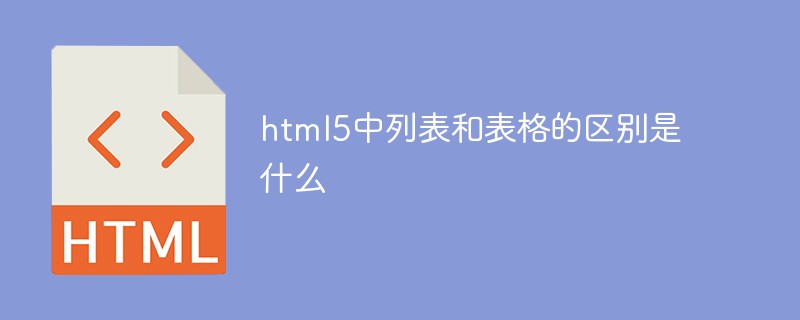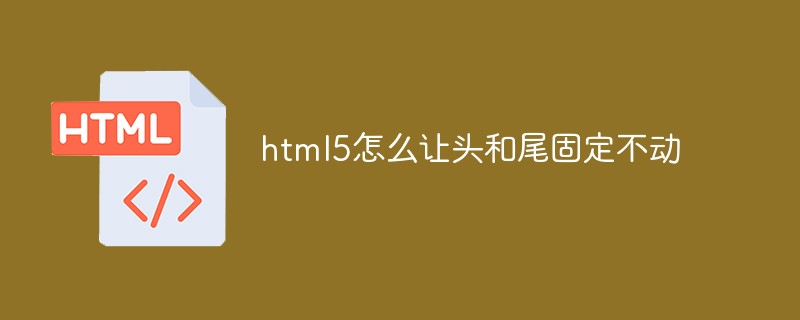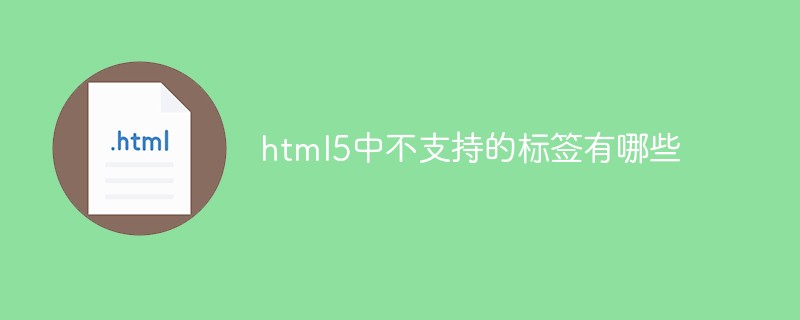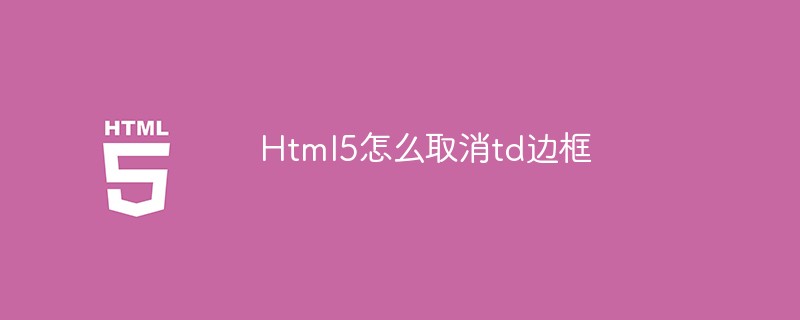 Web Front-end
Web Front-end H5 Tutorial
H5 Tutorial Detailed introduction and usage examples of HTML5 visibilityState attribute_html5 tutorial skills
Detailed introduction and usage examples of HTML5 visibilityState attribute_html5 tutorial skillsIt must be explained here that this "activation" refers to whether this label is being browsed by the user, or whether it is the current label.
So, what exactly is this API used for? Usually, many traditional pages will continue to work when the user does not activate them. For example, when the user is browsing a news portal, the NBA game page he opened before will continue to refresh to get the latest results, and video websites will continue to occupy bandwidth. Loading resources, so if there is too much unnecessary work, it will cause a lot of waste of resources. Therefore, this product is quite useful:
1. The Web program will automatically update page information every once in a while to ensure that users get timely information. However, when users are browsing other pages, they can control it to pause the update.
2. Video websites will continue to load videos when playing online videos until the video is loaded. However, when users are browsing other pages, they can pause the loading of video resources to save bandwidth.
3. There is a large slideshow on the homepage of the website that automatically plays. When the user browses other pages, the playback can be paused.
So, through Page Visibility, we can achieve at least one or more of the following benefits:
1. Save server resources. Server resource usage such as Ajax polling is often ignored. Turning off this type of request can save resources.
2. Save memory consumption.
3. Save bandwidth consumption.
Therefore, using Page Visibility has benefits for both the user and the server.
The following is a formal introduction to this API. Page Visibility adds two properties hidden and visibilityState to the browser's document object. If the current tag is activated, the value of document.hidden is false , otherwise it is true . visibilityState has 4 possible values:
1.hidden: When the browser is minimized, tabs are switched, or the computer is locked, the visibilityState value is hidden
2.visible: When the document of the browser’s top-level context is displayed on at least one screen, visible is returned; when the browser window is not minimized but the browser is blocked by other applications, it is also visible
3.prerender: Returns prerender when the document is loaded outside the screen or invisible. This is a non-essential attribute and the browser can optionally support it.
4.unloaded: Returns unloaded when the document is about to be left (unload). The browser can also optionally support this attribute
In addition, a visibilitychange event will be added to the document, which is triggered when the visibility of the document changes.
Okay, after introducing the attributes, let’s put in a usage example (copy the code and save it to an HTML file, open it and switch tags to test the effect).
<script><br /> function browerKernel(){<br /> var result;<br /> ['webkit', 'moz', 'o', 'ms'].forEach(function(prefix){ <p> if( typeof document[ prefix 'Hidden' ] != 'undefined' ){<br /> result = prefix;<br /> }<br /> });<br /> return result;<br /> }<br /> function init(){<br /> prefix = browerKernel();<br /> var showTip = document.getElementById('showTip');<br /> document.addEventListener( prefix 'visibilitychange', function onVisibilityChange(e){<br /> var tip = null; <br /> if( document[ prefix 'VisibilityState' ] == 'hidden' ) tip = '<p>Leave page';<br /> else if( document[ prefix 'VisibilityState' ] == 'visible' ) tip = '<p>Enter page';<br /> showTip.innerHTML = showTip.innerHTML tip;<br /> });<br /> }<br /> window.onload = init();<br /> </script>
The purpose of this instance is to monitor whether the visibility of the label changes and generate a prompt when the visibility of the label changes.
It is worth noting that at present, browsers still support Page Visibility through private attributes, so when detecting or utilizing the attributes provided by Page Visibility, you need to add the browser private prefix, such as detecting the above in Chrome visibilityState property, you need to detect document.webkitVisibilityState instead of document.visibilityState. Therefore, the Demo will first detect the browser type and then use the Page Visibility API.
 html5的div一行可以放两个吗Apr 25, 2022 pm 05:32 PM
html5的div一行可以放两个吗Apr 25, 2022 pm 05:32 PMhtml5的div元素默认一行不可以放两个。div是一个块级元素,一个元素会独占一行,两个div默认无法在同一行显示;但可以通过给div元素添加“display:inline;”样式,将其转为行内元素,就可以实现多个div在同一行显示了。
 html5中列表和表格的区别是什么Apr 28, 2022 pm 01:58 PM
html5中列表和表格的区别是什么Apr 28, 2022 pm 01:58 PMhtml5中列表和表格的区别:1、表格主要是用于显示数据的,而列表主要是用于给数据进行布局;2、表格是使用table标签配合tr、td、th等标签进行定义的,列表是利用li标签配合ol、ul等标签进行定义的。
 html5怎么让头和尾固定不动Apr 25, 2022 pm 02:30 PM
html5怎么让头和尾固定不动Apr 25, 2022 pm 02:30 PM固定方法:1、使用header标签定义文档头部内容,并添加“position:fixed;top:0;”样式让其固定不动;2、使用footer标签定义尾部内容,并添加“position: fixed;bottom: 0;”样式让其固定不动。
 HTML5中画布标签是什么May 18, 2022 pm 04:55 PM
HTML5中画布标签是什么May 18, 2022 pm 04:55 PMHTML5中画布标签是“<canvas>”。canvas标签用于图形的绘制,它只是一个矩形的图形容器,绘制图形必须通过脚本(通常是JavaScript)来完成;开发者可利用多种js方法来在canvas中绘制路径、盒、圆、字符以及添加图像等。
 html5中不支持的标签有哪些Mar 17, 2022 pm 05:43 PM
html5中不支持的标签有哪些Mar 17, 2022 pm 05:43 PMhtml5中不支持的标签有:1、acronym,用于定义首字母缩写,可用abbr替代;2、basefont,可利用css样式替代;3、applet,可用object替代;4、dir,定义目录列表,可用ul替代;5、big,定义大号文本等等。
 html5废弃了哪个列表标签Jun 01, 2022 pm 06:32 PM
html5废弃了哪个列表标签Jun 01, 2022 pm 06:32 PMhtml5废弃了dir列表标签。dir标签被用来定义目录列表,一般和li标签配合使用,在dir标签对中通过li标签来设置列表项,语法“<dir><li>列表项值</li>...</dir>”。HTML5已经不支持dir,可使用ul标签取代。
 html5是什么意思Apr 26, 2021 pm 03:02 PM
html5是什么意思Apr 26, 2021 pm 03:02 PMhtml5是指超文本标记语言(HTML)的第五次重大修改,即第5代HTML。HTML5是Web中核心语言HTML的规范,用户使用任何手段进行网页浏览时看到的内容原本都是HTML格式的,在浏览器中通过一些技术处理将其转换成为了可识别的信息。HTML5由不同的技术构成,其在互联网中得到了非常广泛的应用,提供更多增强网络应用的标准机。
 Html5怎么取消td边框May 18, 2022 pm 06:57 PM
Html5怎么取消td边框May 18, 2022 pm 06:57 PM3种取消方法:1、给td元素添加“border:none”无边框样式即可,语法“td{border:none}”。2、给td元素添加“border:0”样式,语法“td{border:0;}”,将td边框的宽度设置为0即可。3、给td元素添加“border:transparent”样式,语法“td{border:transparent;}”,将td边框的颜色设置为透明即可。


Hot AI Tools

Undresser.AI Undress
AI-powered app for creating realistic nude photos

AI Clothes Remover
Online AI tool for removing clothes from photos.

Undress AI Tool
Undress images for free

Clothoff.io
AI clothes remover

AI Hentai Generator
Generate AI Hentai for free.

Hot Article

Hot Tools

EditPlus Chinese cracked version
Small size, syntax highlighting, does not support code prompt function

Dreamweaver Mac version
Visual web development tools

ZendStudio 13.5.1 Mac
Powerful PHP integrated development environment

SublimeText3 Mac version
God-level code editing software (SublimeText3)

mPDF
mPDF is a PHP library that can generate PDF files from UTF-8 encoded HTML. The original author, Ian Back, wrote mPDF to output PDF files "on the fly" from his website and handle different languages. It is slower than original scripts like HTML2FPDF and produces larger files when using Unicode fonts, but supports CSS styles etc. and has a lot of enhancements. Supports almost all languages, including RTL (Arabic and Hebrew) and CJK (Chinese, Japanese and Korean). Supports nested block-level elements (such as P, DIV),





